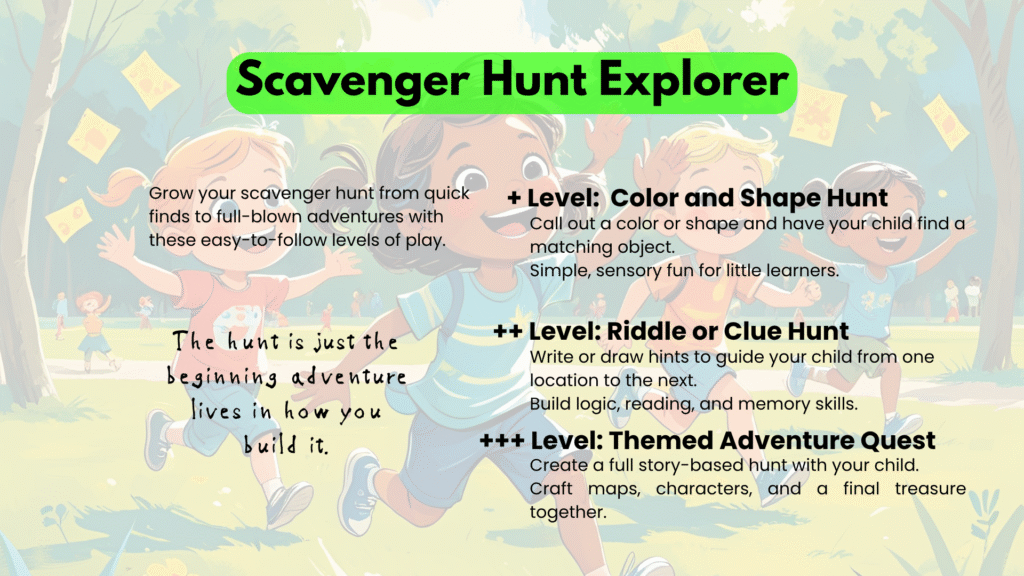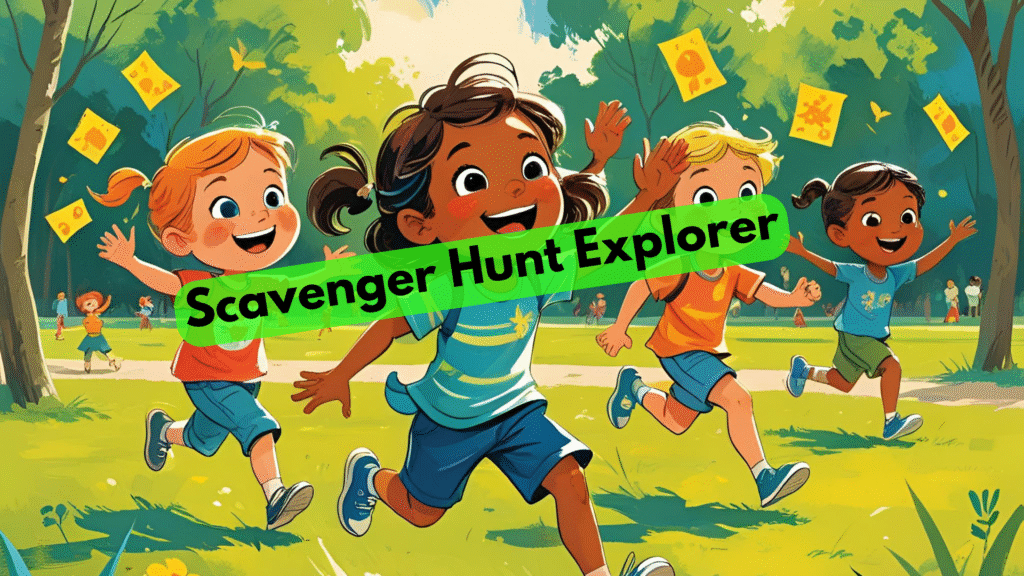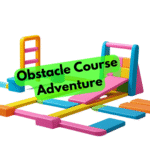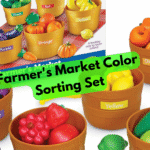Scavenger hunts are one of the simplest ways to ignite curiosity, movement, and imagination in kids. With just a few items and a spark of creativity, you can create a powerful play experience that flexes both the body and the brain. And best of all, scavenger hunts grow with your child—what starts as “find the red thing” can evolve into mystery-solving adventures and co-designed quests.
Whether you’re stuck indoors or venturing into the backyard, this layered approach gives you a clear path to level up your scavenger hunt game. These three stages of play build from sensory basics to storytelling and co-creation—while keeping your child engaged and excited at every step.
+ Level: Color and Shape Hunt
Objective: Call out or show a color or shape and have your child find a matching object.
This level is perfect for toddlers and preschoolers.
- “Find something blue!”
- “Can you spot a circle?”
- “Bring me something green and soft.”
This encourages object recognition, sorting, and exploration in a safe, structured way. It’s quick to set up, great for transitions, and can be repeated in endless variations.
++ Level: Riddle or Clue Hunt
Objective: Use simple riddles, phrases, or pictures to guide your child to each hidden object.
Write or draw clues for each location:
- “I’m where you lay your head, now find me near the bed.”
- “I’m cold and loud, where the veggies go.”
- “Look under the thing that gives you light.”
This boosts reading comprehension, reasoning, and memory—while adding just the right amount of challenge and mystery.
+++ Level: Themed Adventure Quest
Objective: Collaborate with your child to create a full scavenger storyline with crafted clues and a final “treasure.”
Choose a theme like Pirate Treasure Hunt, Forest Explorer, or Magic Potion Quest. Craft maps, decorate “clues,” and act out the storyline together.
Let your child design part of the experience:
- “Draw the next clue.”
- “What challenge does the knight face?”
- “Should the treasure be hidden in the cave (closet) or the island (sandbox)?”
This level promotes storytelling, crafting, planning, and role-playing—making playtime deeply immersive and collaborative.

Final Thought:
Scavenger hunts can be fast-paced or slow and thoughtful. No matter how you design them, they offer a chance for connection and growth. And when your child starts creating their own clues or leading the game, that’s when you know the magic of play is truly working.



